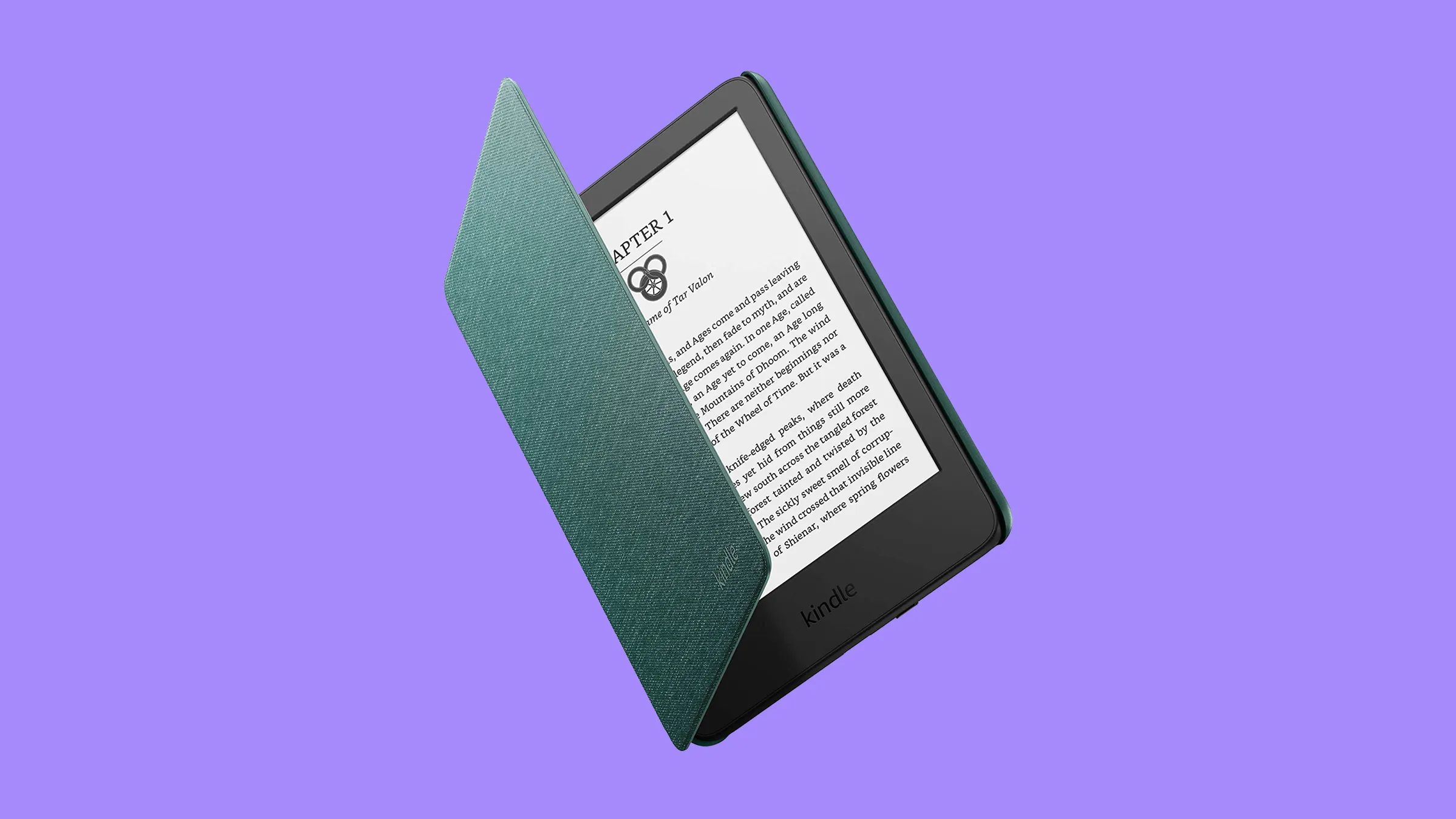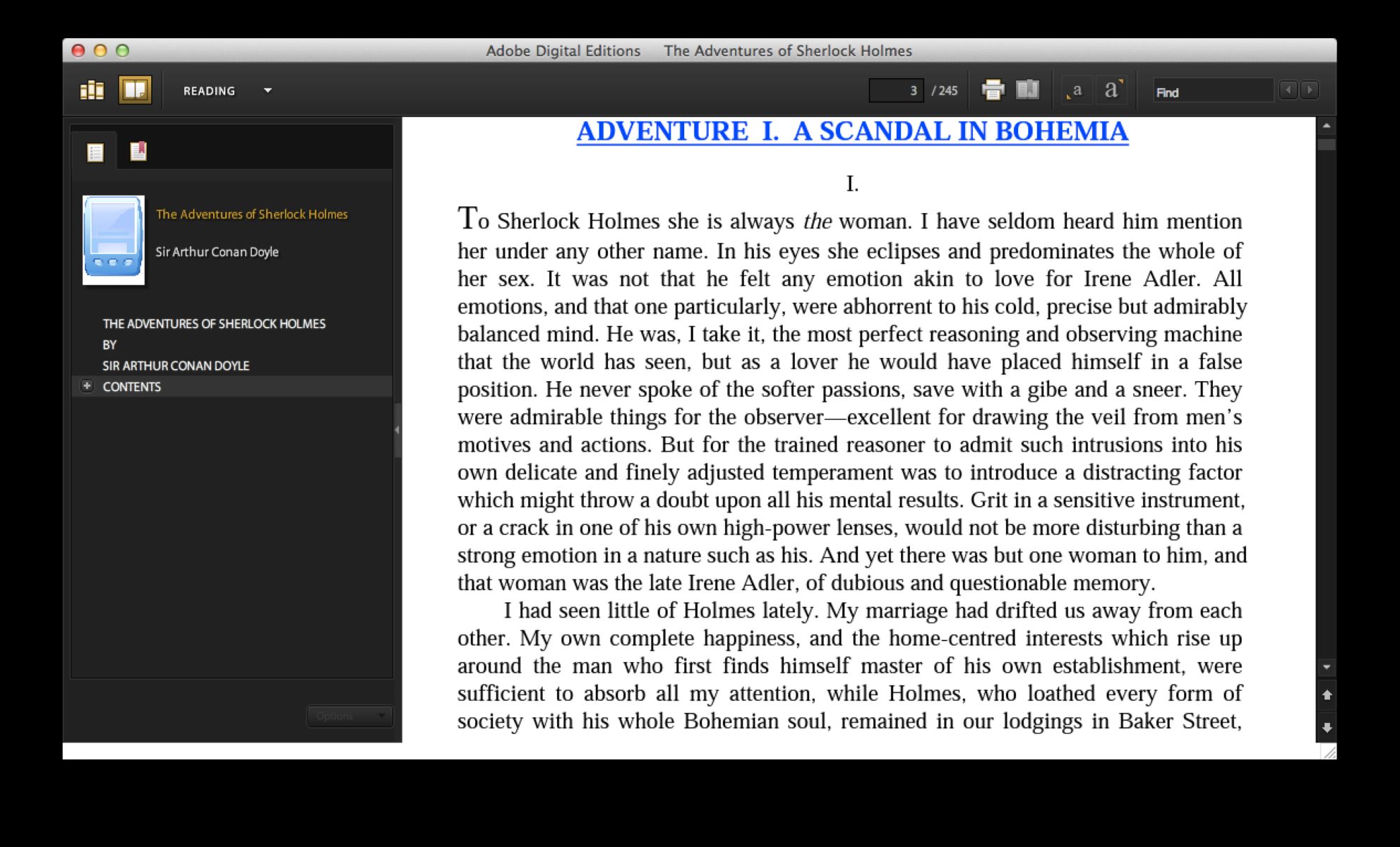Introduction
Welcome to this informative guide on eBook word counts. If you’re an aspiring author or a self-publisher, understanding the ideal word count for your eBook is essential. In the ever-evolving digital landscape, eBooks continue to gain popularity, providing authors with a flexible platform to share their stories and knowledge.
But what exactly is an eBook? How does its word count differ from that of a traditional printed book? And why is word count even important when it comes to eBooks? In this article, we will explore these questions and provide guidelines to help you determine the optimal word count for different types of eBooks.
An eBook, short for electronic book, is a digital version of a book that can be read on electronic devices such as e-readers, tablets, and smartphones. Unlike printed books, eBooks do not have physical pages; instead, they are composed of digital files that can be downloaded, accessed, and read on compatible devices.
Now, you might be wondering, why is word count important when it comes to eBooks? Well, the word count directly affects the length and perceived value of your eBook. Readers expect a certain amount of content based on the genre or category of the eBook, and meeting those expectations can lead to higher reader satisfaction and engagement.
Additionally, word count is a crucial consideration for authors who plan to sell their eBooks. Many online marketplaces, such as Amazon Kindle Direct Publishing, have specific guidelines for eBook word counts. Keeping your eBook within these guidelines ensures that it is eligible for various promotional opportunities, making it more visible to potential readers.
However, it’s important to note that word count guidelines are not set in stone. The ideal word count can vary based on factors such as genre, target audience, and content complexity. In the following sections, we will delve deeper into the factors to consider when determining the word count for your eBook, and provide specific guidelines for different types of eBooks.
What Is an eBook?
An eBook, short for electronic book, is a digital publication that can be read on electronic devices such as e-readers, tablets, and smartphones. It is a popular and convenient alternative to traditional printed books, allowing readers to access a vast library of titles from the comfort of their digital devices.
Unlike physical books, which are composed of tangible pages, eBooks are created in digital formats such as EPUB or PDF. These files contain the text, images, and formatting of the book, which can be accessed and displayed on compatible reading devices.
One of the key advantages of eBooks is their portability and accessibility. With an eBook, you can carry an entire library with you wherever you go, eliminating the need to lug around heavy physical books. This convenience has made eBooks popular among travelers, students, and avid readers who want to have a variety of books at their fingertips.
Another benefit of eBooks is their flexibility in terms of font size and style. With a few taps or clicks, readers can adjust the font size and choose a font that suits their preferences, making reading more comfortable for individuals with visual impairments or those who prefer larger or customized text.
EBooks also offer interactive features that enhance the reading experience. Some eBooks include multimedia elements such as audio, video, and hyperlinks, allowing readers to explore additional content or engage with the material in a more immersive way. This interactivity adds depth and versatility to the reading experience, appealing to a wide range of readers.
Furthermore, eBooks are cost-effective compared to printed books. Digital distribution eliminates printing and shipping costs, resulting in lower prices for eBook titles. Additionally, online marketplaces and self-publishing platforms have made it easier than ever for authors to publish and distribute their eBooks, empowering them to reach a global audience and potentially earn income from their literary works.
In summary, eBooks are digital publications that offer convenience, portability, and flexibility to readers. With their interactive features and cost-effectiveness, eBooks have revolutionized the way we consume written content. Whether it’s a novel, educational material, or a professional guide, eBooks have become an integral part of modern reading habits.
The Importance of Word Count in eBooks
Word count plays a crucial role in determining the length and perceived value of an eBook. It impacts how readers engage with the content and sets certain expectations for their reading experience. Understanding the importance of word count can help authors create eBooks that meet readers’ expectations and stand out in the market.
Firstly, word count affects the overall length of the eBook. Different genres and categories have varying reader expectations when it comes to the length of a book. For example, readers of epic fantasy novels are accustomed to longer books with intricate world-building and complex plotlines. Conversely, readers of novellas or short stories expect shorter, more concise narratives.
Meeting these reader expectations is key to reader satisfaction. If an eBook is too short, readers may feel they didn’t get enough value for their money or that the story was rushed. On the other hand, if an eBook is excessively long, readers may find it tedious or lose interest before reaching the end. Striking the right balance ensures that readers feel they’ve received a fulfilling reading experience.
Additionally, word count is influential in pricing and marketing strategies. Online marketplaces often have pricing tiers based on word count ranges. By understanding these pricing structures, authors can strategically position their eBooks and price them accordingly to attract potential readers. eBooks within certain word count ranges may also be eligible for promotional opportunities and category-specific marketing, increasing their visibility among readers searching for books in their preferred genres.
Moreover, word count impacts the pace and depth of the content. A higher word count allows for more detailed descriptions, character development, and intricate plotlines. This can be beneficial for genres such as epic fantasy, historical fiction, or literary works that require ample space to explore complex themes. Conversely, shorter word counts can create quick-paced, concise narratives that are perfect for genres like mystery, thrillers, or short non-fiction guides.
However, it’s important to note that word count alone does not guarantee the quality or value of an eBook. While certain genres may have word count conventions, focusing solely on meeting a specific word count can result in bloated or underdeveloped content. Content should always take priority, and authors should ensure that the word count is appropriate for the story, subject matter, or intended purpose of the eBook.
Ultimately, word count serves as a guideline to help authors cater to their target readers and align their eBooks within market expectations. By understanding the importance of word count and its impact on different aspects of an eBook, authors can effectively craft their content to provide an engaging and satisfying reading experience.
Factors to Consider When Determining Word Count
When determining the word count for your eBook, it’s important to consider several factors that will influence the length and structure of your content. These factors will help you strike the right balance between meeting reader expectations and effectively conveying your message or story.
The first factor to consider is the genre or category of your eBook. Different genres have different reader expectations when it comes to word count. For example, romance novels tend to be longer, allowing for in-depth character development and emotional arcs. On the other hand, self-help or instructional eBooks are generally more concise, focusing on delivering practical advice and actionable steps.
Next, consider your target audience. Are you writing for children, young adults, or adult readers? The age group of your intended audience will inform the appropriate word count for your eBook. Picture books for young children will have fewer words per page, catering to their shorter attention spans. Novels for adults, however, can have higher word counts to accommodate more complex narratives.
Content complexity is another crucial factor. If your eBook explores intricate concepts, historical events, or scientific theories, you may require a higher word count to provide the necessary explanations and details. On the other hand, if your content is straightforward or focused on delivering concise tips or information, a shorter word count may be suitable.
The intended purpose of your eBook is also key. Is it meant to be a comprehensive guide or a quick reference? If it is an instructional eBook, you may need a higher word count to cover a wide range of topics in detail. However, if you’re aiming to create a short and motivating eBook to inspire readers, a shorter word count may be more effective.
Consider the attention span and reading habits of your target audience as well. In today’s fast-paced digital world, many readers prefer shorter eBooks that can be consumed in a single sitting. However, for readers who enjoy immersing themselves in lengthy narratives and exploring complex worlds, a higher word count may be more suitable.
Lastly, consider your own writing style and the pacing of your story or content. Some authors naturally write more concisely, while others tend to be more descriptive and detailed in their prose. Finding a word count that allows you to express your unique style while maintaining reader engagement is essential.
By taking these factors into account, you can determine the appropriate word count for your eBook. Remember, there are no strict rules that apply to every eBook. The goal is to find a word count that enhances the reading experience, meets reader expectations, and effectively communicates your message or story.
Average Word Count for Different Types of eBooks
While there are no fixed rules when it comes to word count for eBooks, it can be helpful to have a general understanding of the average word counts for different types of eBooks. These averages can serve as guidelines to ensure that your eBook aligns with reader expectations and industry standards.
Let’s explore the average word count ranges for various types of eBooks:
Fiction eBooks:
- Novels: The average word count for novels typically ranges from 70,000 to 100,000 words. However, this can vary depending on the genre. Fantasy and science fiction novels often have higher word counts, reaching up to 120,000 words or more, while young adult novels and romance novels may fall on the lower end of the range.
- Novellas and Short Stories: Novellas typically have word counts ranging from 20,000 to 50,000 words. Short stories, on the other hand, are usually shorter, with word counts ranging from 1,000 to 20,000 words, depending on the literary market or anthology requirements.
- Flash Fiction: Flash fiction refers to very short stories, often with word counts of 1,000 words or less. These concise narratives can pack a powerful punch in a limited amount of words.
Non-fiction eBooks:
- Self-help and How-to Guides: Non-fiction eBooks in these categories typically have word counts ranging from 25,000 to 50,000 words. These eBooks focus on delivering actionable advice and steps, and readers often prefer a concise and practical approach.
- Biographies and Memoirs: Biographies and memoirs can have varied word counts, depending on the scope of the subject’s life or the depth of personal experiences. The average word count typically falls between 60,000 to 100,000 words.
- Historical and Academic Books: Word counts for historical and academic eBooks can vary widely, depending on the depth of research and the complexity of the subject matter. These eBooks often have higher word counts, ranging from 80,000 to 120,000 words or more.
Children’s eBooks:
- Picture Books: Picture books for young children often have lower word counts, ranging from 500 to 1,000 words. These shorter stories are accompanied by colorful illustrations and are designed to capture young readers’ attention.
- Early Chapter Books: Early chapter books for children transitioning from picture books typically have word counts ranging from 5,000 to 15,000 words. These books contain shorter chapters and may include some illustrations.
- Middle Grade and Young Adult Novels: The word counts for novels in these categories can vary. Middle-grade novels typically range from 20,000 to 50,000 words, while young adult novels can have word counts similar to their adult counterparts, ranging from 60,000 to 100,000 words.
Keep in mind that these averages are not set in stone, and there is always room for variation. It’s important to stay true to your story or content and find a word count that best serves your intended audience and genre.
Fiction eBooks: Word Count Guidelines for Various Genres
When it comes to fiction eBooks, different genres often have specific word count guidelines that can help authors craft their stories while meeting reader expectations. Let’s delve into the word count guidelines for various genres:
Fantasy and Science Fiction:
These genres often encompass vast worlds, complex plots, and detailed character development. The average word count for fantasy and science fiction novels ranges from 80,000 to 120,000 words. However, epic fantasy novels or science fiction sagas can exceed this range, with word counts reaching 150,000 words or more.
Mystery and Thriller:
Mystery and thriller novels are known for their fast-paced plots, suspenseful twists, and edge-of-your-seat storytelling. The average word count for these genres typically falls between 70,000 to 90,000 words. However, some bestselling authors in this genre may have longer novels with word counts up to 100,000 words.
Romance:
Romance novels focus on the development of a romantic relationship and often incorporate emotional depth and passionate storytelling. The average word count for romance novels ranges from 70,000 to 90,000 words. However, sub-genres such as historical romance or romantic suspense might have slightly longer word counts, ranging up to 100,000 words.
Literary Fiction:
Literary fiction is characterized by its emphasis on intricate writing, introspective themes, and unique narrative styles. The average word count for literary fiction novels falls between 70,000 to 100,000 words. However, it is important to note that literary fiction allows for more flexibility in word count, with some novels exceeding 100,000 words.
Young Adult:
Young adult novels cater to readers in the age range of 12 to 18 years old, and the word count can vary depending on the sub-genre and target age group. The average word count for young adult novels ranges from 60,000 to 80,000 words. However, young adult fantasy novels or series may have higher word counts, reaching up to 100,000 words.
Historical Fiction:
Historical fiction novels require extensive research to accurately portray a specific time period or event. The average word count for historical fiction typically falls between 80,000 to 100,000 words. However, this range can vary depending on the historical context and complexity of the narrative.
Remember these are general guidelines, and exceptions always exist. It’s crucial to prioritize storytelling and craft a compelling narrative that engages readers while staying true to the genre. Ultimately, finding the right word count for your fiction eBook involves balancing reader expectations with your unique story vision.
Non-fiction eBooks: Word Count Guidelines for Various Categories
When it comes to non-fiction eBooks, word count guidelines can vary depending on the subject matter and the specific category of the eBook. Understanding these guidelines can help authors effectively communicate their knowledge and provide valuable information to readers. Let’s explore the word count guidelines for various non-fiction eBook categories:
Self-help and How-to Guides:
Self-help and how-to guides aim to empower readers with practical advice and actionable steps. The average word count for these eBooks ranges from 25,000 to 50,000 words. This allows authors to provide thorough explanations and guidance without overwhelming readers with excessive information.
Biographies and Memoirs:
Biographies and memoirs tell the life stories of individuals, whether they are famous figures or ordinary individuals with remarkable experiences. The word count for these genres can vary widely depending on the scope and depth of the subject’s life. On average, biographies and memoirs tend to fall between 60,000 to 100,000 words.
Historical and Academic Books:
Historical and academic eBooks often require in-depth research and analysis. The average word count for these categories can range from 80,000 to 120,000 words or more. This range provides authors with the necessary space to explore complex topics, present detailed arguments, and provide thorough reference materials.
Business and Finance:
Business and finance eBooks cover a broad range of topics, from entrepreneurship and leadership to personal finance and investment strategies. The average word count for these eBooks typically falls between 40,000 to 70,000 words. This allows authors to provide comprehensive information while keeping the content concise and actionable.
Health and Wellness:
eBooks in the health and wellness category focus on providing readers with information on maintaining a healthy lifestyle, managing specific conditions, or offering practical advice on wellness practices. The average word count for health and wellness eBooks ranges from 30,000 to 50,000 words, depending on the complexity of the topic and the level of detail provided.
Remember that these are general guidelines, and the specific word count for your non-fiction eBook may vary based on the depth of research, the level of detail required, and the expectations of your target audience. Always prioritize the quality and relevance of information rather than strictly adhering to a specific word count.
Children’s eBooks: Word Count Guidelines for Different Age Groups
Children’s eBooks cater to young readers, and the word count of these eBooks should be appropriate for their age and reading level. Understanding the recommended word count guidelines for different age groups can help authors create engaging and age-appropriate content. Let’s explore the word count guidelines for children’s eBooks based on different age groups:
Picture Books (Ages 0-5):
Picture books are typically designed for young children who are just beginning their reading journey. These books rely heavily on illustrations to tell the story, with limited text. The typical word count for picture books is between 500 to 1,000 words. The focus is on capturing the attention and imagination of young readers through vibrant visuals and simple, engaging storytelling.
Early Readers (Ages 6-8):
Early reader books are intended for children who are developing their reading skills. These books feature slightly more text and shorter chapters. The word count for early reader books ranges from 1,000 to 5,000 words, depending on the complexity of the story and reading level. The aim is to provide young readers with more text to practice their reading skills while maintaining an engaging and manageable storyline.
Middle Grade (Ages 9-12):
Middle grade books target children who are transitioning into more complex narratives and longer reading sessions. The word count for middle grade books typically ranges from 20,000 to 50,000 words. This word count allows for more intricate storytelling, character development, and the exploration of deeper themes. Middle grade books often have shorter chapters to keep young readers engaged.
Young Adult (Ages 13 and Up):
Young adult (YA) books cater to older teenagers or young adults. These books can have a wide range of word counts, similar to adult fiction, depending on the genre and complexity of the story. On average, YA novels have word counts ranging from 60,000 to 100,000 words. YA novels allow for more mature themes and character complexities while keeping the storytelling engaging and relatable for young adult readers.
It’s important to remember that these word count guidelines are flexible, and authors should prioritize engaging storytelling and appropriate content for each age group over strictly adhering to a specific word count. Understanding the developmental stage and reading abilities of the target age group will help you craft compelling children’s eBooks that captivate young readers and foster a love for reading.
Short eBooks vs Long eBooks: Pros and Cons
When it comes to eBook length, authors often face the decision of whether to create a shorter eBook or a longer one. Each option has its own set of pros and cons, and understanding these can help you make an informed choice based on your goals and the needs of your target audience. Let’s explore the advantages and disadvantages of short eBooks versus long eBooks:
Short eBooks:
Short eBooks typically have a word count of less than 20,000 words. These compact eBooks offer several benefits:
Pros:
- Quick and focused reading experience:
- Easy to consume and digest:
- Lower production time and cost:
- Ideal for niche topics or specific niches:
Short eBooks cater to readers who prefer concise, to-the-point information. They allow readers to quickly absorb knowledge without dedicating too much time.
Shorter eBooks are often more approachable for readers who are looking to dip their toes into a new subject or get a quick overview on a specific topic.
Creating a shorter eBook requires less time for research and writing, as well as fewer editing and formatting processes. This makes it a more efficient and cost-effective option for authors.
Short eBooks are perfect for addressing niche subjects that don’t require lengthy explanations or encompass a smaller focused audience.
Cons:
- Limited depth and detail:
- Perceived value:
- Less room for storytelling:
Due to the shorter length, it may be challenging to cover complex topics or provide in-depth analysis that readers might expect from a longer eBook.
Some readers may associate shorter eBooks with less value, assuming that they don’t contain as much valuable information as longer ones. This perception can impact pricing and reader willingness to purchase.
Fiction eBooks with shorter word counts may not have the space to fully develop characters, explore intricate plotlines, or build immersive worlds.
Long eBooks:
Long eBooks typically have a word count of 50,000 words or more. These expansive eBooks offer the following advantages:
Pros:
- Comprehensive and detailed content:
- Opportunity for thorough research and analysis:
- Perceived value and authority:
- Greater storytelling possibilities:
Long eBooks allow authors to delve deep into topics, provide extensive explanations, and cover various aspects related to the subject matter.
The longer length provides the flexibility to conduct comprehensive research, ensuring the accuracy and reliability of the information presented.
Longer eBooks often carry a perception of higher value, making them more likely to be viewed as authoritative and comprehensive resources.
For fiction eBooks, a longer word count allows for more character development, complex plots, and immersive storytelling.
Cons:
- Time-consuming to produce:
- Higher cost of production:
- Potential for reader overwhelm:
Creating a longer eBook requires significant time and effort in terms of research, writing, editing, and formatting.
Longer eBooks may involve higher expenses for editing, cover design, and other production elements.
Some readers may find longer eBooks intimidating, and they may hesitate to commit to a lengthy reading experience.
Ultimately, the decision between a short eBook and a long eBook depends on the specific objectives of your project, the needs and preferences of your target audience, and the depth of information or storytelling you wish to provide. Evaluating these pros and cons can guide you in determining the optimal length for your eBook.
Tips for Achieving the Right Word Count in Your eBook
Striking the right word count balance in your eBook is crucial to ensure that it meets reader expectations and effectively conveys your message or story. Here are some tips to help you achieve the optimal word count:
1. Define your target audience:
Understanding who your eBook is intended for will guide your word count decisions. Consider the age, reading level, and interests of your target audience to determine the appropriate length that will engage and resonate with them.
2. Set clear goals:
Identify the specific objectives of your eBook. Are you aiming to provide a quick and concise overview of a topic? Or do you intend to dive deep into complex subject matter? Clearly defining your goals will help you determine the word count needed to achieve them.
3. Outline your content:
Create a detailed outline before you start writing. This will serve as a roadmap and help you control the flow and structure of your content. An outline also allows you to assess the amount of information or story you need to cover, and can help you estimate the word count required for each section or chapter.
4. Be mindful of pacing:
Pacing is crucial for maintaining reader engagement. Ensure that your eBook flows smoothly and doesn’t feel rushed or overly drawn out. Avoid repetition or excessive details that may lengthen the eBook unnecessarily, or skim over important information that requires more attention.
5. Focus on quality over quantity:
Quality content always takes precedence over word count. Aim to provide valuable, well-researched information or an engaging narrative that captivates readers. Strive for clarity, concise explanations, and strong storytelling, rather than padding your eBook with unnecessary text.
6. Revise and edit ruthlessly:
Once you’ve written your eBook, revise and edit it thoroughly. Eliminate any extraneous information, redundant sentences, or tangents that don’t contribute to the overall quality or purpose of your eBook. Streamlining your content can help you achieve a more appropriate and polished word count.
7. Seek feedback:
Enlist the help of beta readers or professional editors to provide feedback on your eBook. They can offer valuable insights on areas where the content may be too verbose or lacking necessary depth, helping you fine-tune your word count to strike the right balance.
By implementing these tips, you can ensure that your eBook meets the desired word count while providing optimal value and engagement for your readers. Remember, word count is a tool to enhance your content, but it’s the quality and relevance of the information or storytelling that truly matters.
Conclusion
Determining the right word count for your eBook is an essential aspect of creating a successful and engaging publication. By considering factors such as genre, target audience, content complexity, and reader expectations, you can find the optimal balance between length and value.
For fiction eBooks, understanding the genre-specific guidelines can help you meet reader expectations. Whether it’s crafting an epic fantasy novel with a higher word count or creating a fast-paced mystery with shorter chapters, aligning your word count with the genre can enhance the reader experience.
In non-fiction eBooks, catering to the needs of your target audience and maintaining the appropriate level of detail is crucial. From self-help guides to academic books, striking a balance between comprehensive information and concise delivery is essential to appeal to readers in each specific category.
Children’s eBooks require special consideration. Determining the word count based on different age groups ensures that your content is engaging, appropriate, and matches the reading abilities and attention spans of young readers.
Deciding between short eBooks and long eBooks comes with its own set of pros and cons. By understanding the benefits and challenges of each option, you can choose the suitable approach based on your goals, content, and target audience.
Ultimately, the key is to prioritize quality content and effective storytelling over strict adherence to word count guidelines. Providing valuable information, engaging narratives, and meeting reader expectations should always be the primary focus of your eBook.
By following the tips outlined in this guide, you can navigate the process of determining the ideal word count, create compelling content, and deliver eBooks that captivate your readers.
Remember, word count is a tool to enhance the reading experience, but it’s the content itself that truly matters. Embrace your creativity, embrace your storytelling abilities, and find the perfect balance that allows your eBook to shine.

























